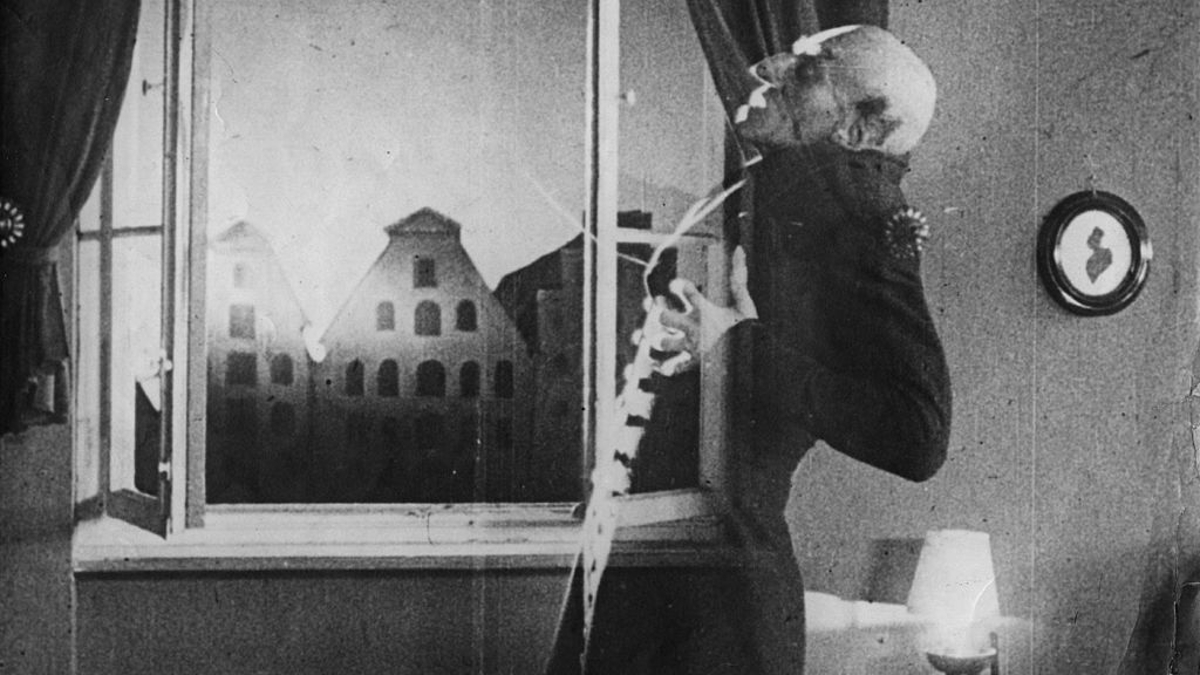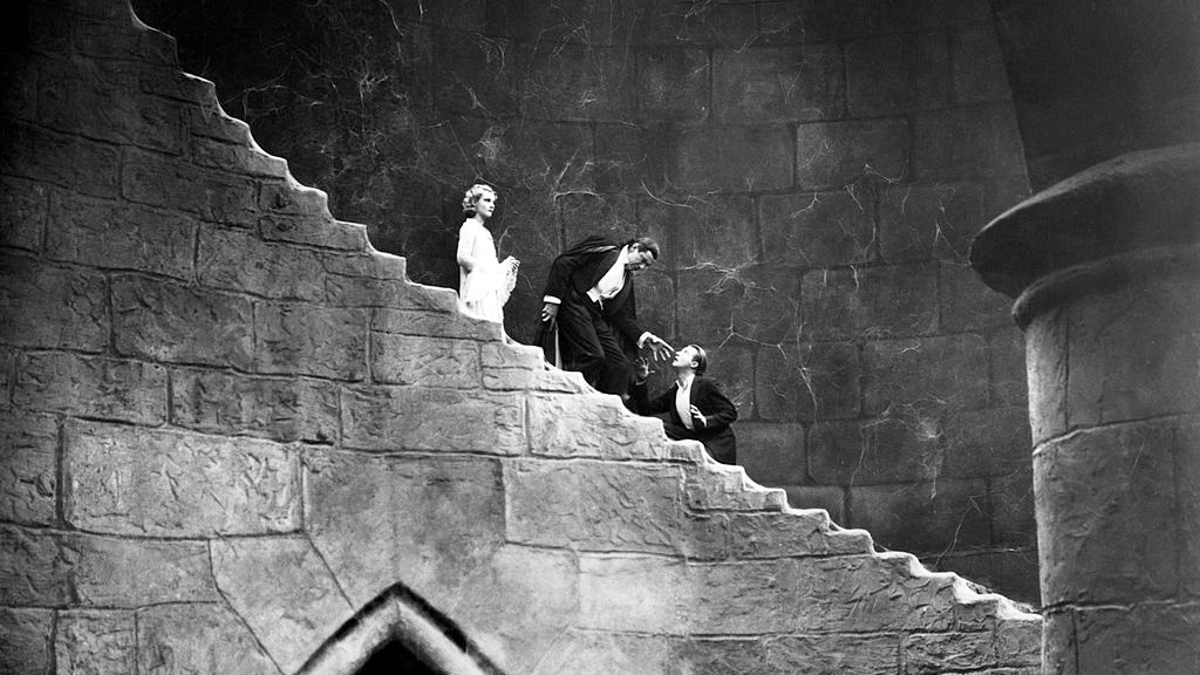With the recent release of Renfield, the internet has been wondering if the Chris McKay film is a brand new idea, a sequel, or an adaptation of something else. The short answer is that it depends who you ask. R.M. Renfield was a character in the Bram Stoker’s 1897 gothic horror Dracula, and a version of him has appeared in many of the most famous adaptations of the famous novel — he’s pretty integral to the entire tale. However, the film Renfield was pitched by Robert Kirkman as an original story, and not a sequel, although director McKay disagrees with that take.
Here’s a rundown of the influential character, and a more definitive answer as to whether or not Renfield is an original movie, or based on an existing IP.
Who is Renfield?

Renfield appeared in Dracula as the titular vampire’s servant and familiar. This effectively means that he helps the evil Count to find and trap his victims, including Mina Harker, the main object of Dracula’s desires in the book. In the novel, Renfield is a compulsive eater of insects, and lives in an asylum where he’s treated by Dr John Seward, who gives us much of our information about the character. Renfield often tries to escape the asylum to fulfil his obligations to Dracula.
As Dracula is an epistolary novel (one written through things like letters, diary entries, and newspaper articles instead of a standard first, second, or third-person narrative) we mostly see Renfield through the eyes of others. In the book, our main description of the character comes from Dr Seward’s journal:
“R. M. Renfield, aetat 59. Sanguine temperament, great physical strength, morbidly excitable, periods of gloom, ending in some fixed idea which I cannot make out. I presume that the sanguine temperament itself and the disturbing influence end in a mentally-accomplished finish, a possibly dangerous man, probably dangerous if unselfish.”
Renfield’s diet of insects stems from delusions that compel him to keep eating the creepy-crawlies as he believes they give him their life force, and therefore power. This delusion is why he’s in the asylum. We soon learn that Renfield is receiving insects from the Count, beginning with flies. His strange behaviours escalate: he starts feeding the flies to spiders, which he believes give him more force when he eats them as they’re bigger. Soon, he’s capturing birds with the flies, before he eventually asks for a cat to eat the birds. When this is denied, he begins eating the birds himself. At a later point in the novel, he attacks the doctor by slashing him with a knife before licking his blood off the floor.
It’s through Renfield that readers of the novel began to understand vampirism as envisioned by Stoker in his book. We soon learn that he acts this way as he’s under the influence of Count Dracula, who he continuously tries to meet, only to be recaptured and placed back under care. One of the ways Dracula controls Renfield is by offering him an endless supply of creatures to eat, satiating the familiar’s need for blood and life force.
Renfield’s humanity is shown when he’s confronted by Mina Harker, whom he begs for help, claiming he wants to be freed from Dracula’s grasp. He tries to fight Dracula, thinking he has a chance as he believes those under psychiatric care can often have super strength, but once he looks into the count’s eyes all of his power leaves him. The vampire then launches Renfield against the floor, injuring him almost to the point of death. Dracula then moves on to try and find Harker, only to be repelled by the vampire hunter Van Helsing. As the Count flees, he makes sure to end Renfield’s life, breaking his neck.
Not much of Renfield’s past is discussed in the novel, but in the recent movie he’s given a backstory as a lawyer who was looking to make a real estate deal with the Count, thus putting him in the vampire’s sights and allowing him to be taken under his control. The original novel begins with Mina’s husband Jonathan, a solicitor, heading to Dracula’s castle to help him with a real estate deal, but in Tod Browning’s 1931 film Dracula Renfield replaces Jonathan Harker as the estate agent. So, the story of how Renfield came to be under Dracula’s control in the newest adaptation is likely to be a nod to that movie, which gives McKay’s claims about it being a sequel more weight.
Where else have we seen the character Renfield before?

While Nicholas Hoult’s recent interpretation of Renfield is one of the first ones to place the character at the centre of the story, Dracula’s servant and familiar has appeared in numerous adaptations of Stoker’s famous novel.
In the 1922 silent horror classic Nosferatu, probably the most famous Dracula film adaptation, the character is renamed as Knock, and doesn’t live in an asylum but at Count Orlok’s castle (Orlok being Dracula). As mentioned above, he was the main character in the iconic 1931 film adaptation of the novel, in which he was famously played by Dwight Frye. Renfield also appeared as a mute in a 1970 film adaptation, and a 1977 BBC version shows him as a sympathetic character with little control over himself.
In the 1979 Werner Herzog movie, Renfield was returned to the mental asylum. Another famous Renfield was musician Tom Waits, who played the character in Francis Ford Coppola’s 1992 version of the story, where instead of trying to save Mina Harker out of the goodness of his heart he wants her gone as he is jealous of the attention Dracula is lavishing on her.
Renfield’s not always a tragic character, though. In the famous Mel Brooks spoof Dracula: Dead and Loving It, Peter MacNicol played the role to great comedic effect, parodying Frye’s iconic portrayal. In the British television series Young Dracula, Renfield is an incredible scientist and masochist, before eventually becoming a vampire himself, albeit one who isn’t very good at using his newfound powers. And in the 2013 NBC series Dracula, Nonso Anozie portrays a suave, sophisticated, and educated Renfield, who is under Dracula’s bidding but treated with much more respect by his undead boss than in other adaptations.
There have also been other characters who have been directly inspired by Renfield, although they don’t share the exact same names or characteristics. In the 2000 episode of Buffy the Vampire Slayer “Buffy vs Dracula,” Xander falls under Dracula’s spell, begins eating spiders and other bugs, and refers to Dracula as his master while obeying all his orders – all behaviors that are clearly shaped by Renfield’s character.
Is Renfield (2023) an original movie?

While the character of Renfield is based on Bram Stoker’s intellectual property, the concept for the film itself is an original story that mixes the lore of several other adaptations. It was first pitched by Robert Kirkman, who also wrote the story, although the screenplay was written by Ryan Ridley. With that said, in an interview with Collider , directorChris McKay claimed he saw the film as a direct sequel to the 1931 film Dracula:
“I fell in love with the character of Renfield and his relationship with Dracula. Renfield is basically a guy who wants to get out of this bad relationship, and doesn’t know how—he’s been in this relationship for 93 years, and he wants to get out of it. I looked at this as an opportunity, because it has a lot of black comedy in it, there’s a lot of action in it, and there’s a little bit of suspense and drama in it too. So that, to me, seemed like a real fun combination. It’s not something that comes around the table very often. Something that’s obviously still tied to one of the oldest IPs in the world and probably one of the most filmed IPs in the world when you look at it. Dracula’s probably up there with Sherlock Holmes and Hamlet as far as literary characters that you see in movie after movie.”
So, whether or not Renfield is an original movie or based on previous property is up to interpretation. But one thing’s for sure: it’s an enjoyable watch, with plenty of laughs and great action scenes.

